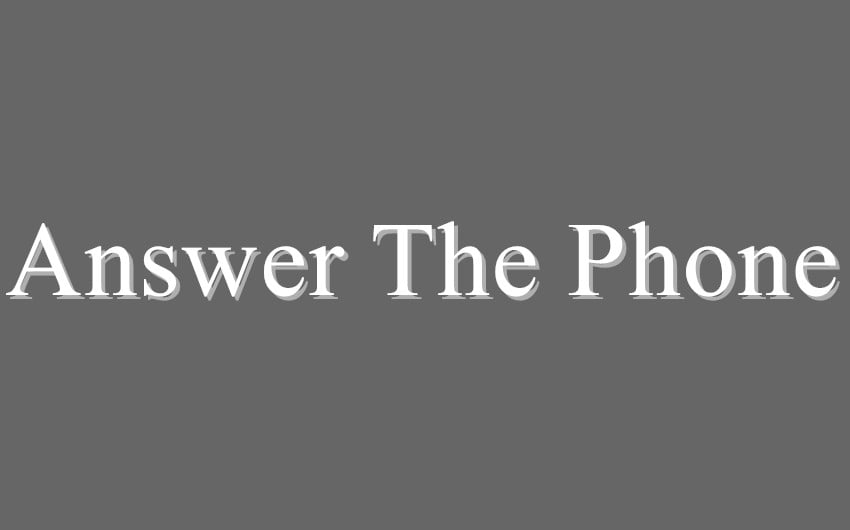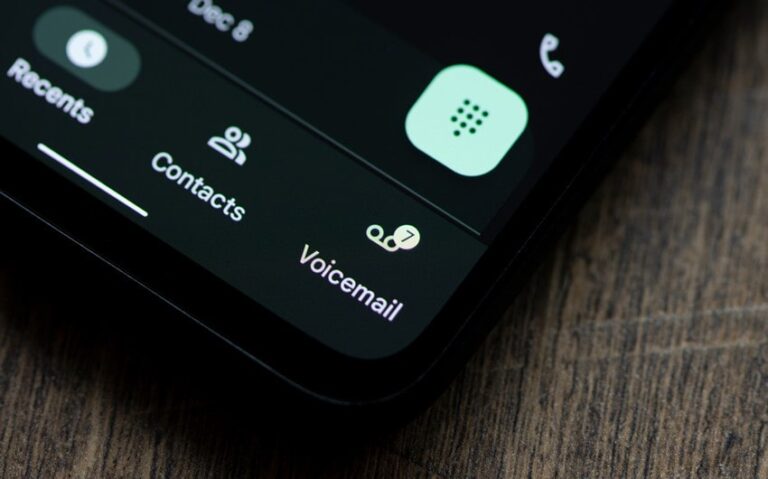Breaking Down ATP Meaning in Text Messaging
In the fast-paced world of texting, keeping up with the latest acronyms can feel like a challenge. One you might have come across is “ATP.” But what exactly does it mean when someone sends you this?
Understanding the ATP meaning in text can help you navigate conversations more smoothly and avoid any confusion. Whether you’re a seasoned texter or just getting the hang of modern slang, knowing what ATP stands for will keep you in the loop and ready to respond appropriately.
What Does ATP Stand For in Texting?

In the realm of texting, “ATP” typically stands for “Answer The Phone.” It’s a straightforward and direct acronym that someone might use when they want you to pick up a call. Instead of typing out the entire phrase, which can take longer and feel more formal, people often opt for this three-letter shortcut to convey their message quickly and efficiently.
This might happen when the conversation becomes too complex to handle through texting, when the person has something important or urgent to discuss, or simply when they prefer talking over typing.
How ATP is Used in Conversation
Casual Conversations with Friends
In everyday conversations with friends, “ATP” might pop up when someone wants to switch from texting to talking, especially if they have something important or lengthy to discuss. For example, if you’re making plans for the weekend and the details are getting too complicated to type out, your friend might text “ATP” as a way to quickly transition to a call. It’s a shorthand that says, “Let’s discuss this verbally instead of typing it all out.”
Another common use might be when a friend is feeling emotional or needs to talk about something personal. Rather than writing out a long text message, they might prefer to hear your voice, making “ATP” a natural way to request that connection.
Urgent or Important Matters
“ATP” is often used in situations where there’s a sense of urgency. If someone needs to convey something quickly or requires an immediate response, they might text “ATP” to prompt you to answer their call. For instance, if there’s an urgent update or a last-minute change in plans, using “ATP” can expedite the conversation, ensuring that the message is communicated clearly and without delay.
In these contexts, “ATP” serves as a polite nudge, asking for your attention without needing to send a longer message that could potentially slow down the interaction. It’s a quick way to indicate that the matter at hand is important enough to warrant a phone call.
Professional or Work-Related Texts
Though less common in formal work environments, “ATP” can sometimes appear in professional settings, especially in more casual workplaces or among colleagues who communicate frequently via text. If a work-related issue requires immediate discussion, a colleague might send “ATP” to signal the need for a call. For example, if there’s a time-sensitive project update or a decision that needs to be made quickly, “ATP” can help shift the conversation from text to a more efficient phone call.
However, in professional settings, it’s important to consider the tone and relationship between the parties involved. While “ATP” might be perfectly acceptable among close colleagues, in more formal contexts, it might be better to use a more explicit request like “Can you give me a call?” to avoid any potential misunderstanding.
Personal Relationships and Family
In personal and family relationships, “ATP” is often used to create a more immediate and personal connection. For instance, a family member might send “ATP” when they have something important to discuss, or simply because they prefer to talk rather than text. This can be particularly common among older family members who might not be as comfortable with texting or who value hearing a loved one’s voice.
In romantic relationships, “ATP” might be used to indicate a desire for a more intimate conversation. If a partner sends “ATP,” it could be their way of saying they miss hearing your voice or want to discuss something in more depth than a text message allows.
Common Misunderstandings and Other Meanings
While “ATP” is commonly used in texting to mean “Answer The Phone,” it’s important to recognize that this acronym can lead to confusion or misunderstandings, especially if the context isn’t clear. Like many abbreviations, “ATP” can have multiple meanings depending on the situation or the background of the person using it. Here’s a deeper look into some of the common misunderstandings and other meanings associated with “ATP.”
ATP in Science: Adenosine Triphosphate
One of the most well-known meanings of “ATP” outside of texting is in the field of science, where it stands for Adenosine Triphosphate. ATP in this context is a crucial molecule in biology, known as the “energy currency” of the cell. It’s involved in various cellular processes, including muscle contraction, nerve impulse transmission, and chemical synthesis.
If you’re texting with someone who has a background in science—like a student, researcher, or professional—they might initially associate “ATP” with Adenosine Triphosphate rather than “Answer The Phone.” This can lead to a moment of confusion, especially if the conversation context doesn’t immediately clarify the intended meaning. For example, if a biology student receives a text saying “ATP,” they might wonder why you’re bringing up cellular energy instead of realizing you want them to answer a call.
ATP in Sports: Association of Tennis Professionals
Another common meaning of “ATP” is in the world of sports, particularly tennis, where it stands for the Association of Tennis Professionals. The ATP is the governing body of men’s professional tennis circuits, organizing tournaments, ranking players, and overseeing the sport globally.
For tennis enthusiasts or those who follow the sport closely, seeing “ATP” in a text might make them think of the tennis association, especially if the conversation has anything to do with sports. For instance, if you’re texting someone who’s a tennis fan, they might momentarily think you’re referring to an upcoming ATP tournament or a player ranking before realizing you’re asking them to “Answer The Phone.”
Confusion in Multi-Generational Communication
Misunderstandings with “ATP” can also arise in multi-generational communication. Younger people are often more familiar with texting abbreviations and acronyms, using them frequently in their daily conversations. However, older generations might not be as familiar with these shortcuts, leading to potential confusion.
For example, if a teenager texts “ATP” to their grandparent, the older recipient might not understand the abbreviation at all, leading to confusion or the need for clarification. They might respond with a question like “What does ATP mean?” or simply not respond because they don’t know how to interpret the message. In such cases, it’s important to be mindful of who you’re texting and adjust your language accordingly to ensure clear communication.
Misinterpretation Due to Lack of Context
Finally, one of the most common sources of misunderstanding with “ATP” (or any acronym) is a lack of context. If the conversation is abrupt or lacks clarity, the recipient might struggle to understand what you’re trying to convey. For example, if you suddenly text “ATP” without any prior indication that you want to call, the recipient might not immediately grasp that you’re asking them to “Answer The Phone.” They might interpret it as a typo or wonder if it’s related to something else entirely.
To avoid this, it’s helpful to provide a bit of context around your use of “ATP.” For instance, pairing it with a brief message like “ATP, I need to discuss something quickly” can make your intention clear and reduce the likelihood of misinterpretation.
How to Respond to ATP

When you receive a text that says “ATP,” your response can vary depending on the context of the conversation, your relationship with the sender, and the urgency of the message. Let’s explore some common scenarios and the best ways to respond to “ATP.”
1. Immediate Response: Answering the Call
If you’re available and ready to take a call, the most straightforward response to “ATP” is to simply answer the phone when it rings. This is the expected response when someone sends “ATP,” especially if the conversation needs to move from texting to talking quickly. By answering the phone promptly, you’re acknowledging their request and allowing the conversation to continue seamlessly.
For example, if you receive a text that says “ATP, I need to talk now,” you can either wait for their call or call them back immediately. This response shows that you’re attentive and ready to engage in a more in-depth conversation.
2. Responding When You’re Busy
Sometimes, you might receive an “ATP” text when you’re in the middle of something and can’t answer the phone right away. In this case, it’s important to acknowledge the message and let the sender know you’ll get back to them as soon as possible. A polite and clear response can help manage their expectations and prevent any misunderstandings.
For instance, you might respond with:
- “I’m in a meeting right now, but I’ll call you back in 15 minutes.”
- “I can’t talk at the moment, but I’ll be free in an hour. Can I call you then?”
- “I’m driving right now, but I’ll call you as soon as I’m parked.”
These responses are respectful and show that you value the conversation but need a little time before you can engage.
3. Clarifying the Request
There may be situations where you’re unsure why the person wants you to “Answer The Phone.” If the context isn’t clear or if you feel the conversation can continue over text, you can ask for more information before deciding to take the call. This can be especially useful if you’re in a situation where taking a call might be inconvenient.
For example, you could reply with:
- “Is it urgent? I’m in a quiet place and can’t talk right now.”
- “Can this be handled over text, or do we need to talk on the phone?”
- “What’s up? If it’s quick, I can step out to take your call.”
These responses give the sender an opportunity to explain why they’re asking you to call, and it allows you to assess whether it’s necessary to switch to a phone conversation.
4. Handling Misunderstandings
Sometimes, the use of “ATP” might lead to misunderstandings, especially if the recipient isn’t familiar with the acronym or if it’s used in an unexpected context. If you’re unsure what the sender means by “ATP,” it’s perfectly okay to ask for clarification. This ensures that both parties are on the same page and prevents any miscommunication.
For example, you might reply with:
- “ATP? I’m not sure what you mean. Do you need me to call you?”
- “What does ATP stand for in this context?”
- “Do you mean you want me to answer the phone?”
These responses help clear up any confusion and demonstrate that you’re engaged in the conversation, even if you’re not familiar with the acronym.
5. Offering an Alternative
If you’re unable to answer the phone but still want to address the sender’s needs, offering an alternative way to communicate can be a helpful response. This could involve suggesting another time to talk, offering to handle the issue over text, or proposing a video call if that’s more convenient.
For instance, you could respond with:
- “I can’t talk right now, but I can text if that works for you.”
- “How about a video call later? I’m tied up at the moment.”
- “I’m in a noisy place. Can we talk later tonight?”
These alternatives show that you’re flexible and willing to accommodate the conversation in a way that works best for both parties.
6. Responding in Professional Settings
In a professional setting, it’s important to handle “ATP” requests with an appropriate level of formality, especially if the text is from a colleague, client, or superior. If you’re unable to take the call immediately, it’s essential to provide a clear and courteous response that indicates when you’ll be available.
Examples of professional responses might include:
- “I’m currently in a meeting, but I’ll be available to call you back at 3 PM.”
- “I’m tied up at the moment. Can we schedule a call for later this afternoon?”
- “I’m on another call right now. I’ll reach out to you as soon as I’m free.”
These responses maintain professionalism and show that you respect the urgency of the request while also managing your time effectively.







